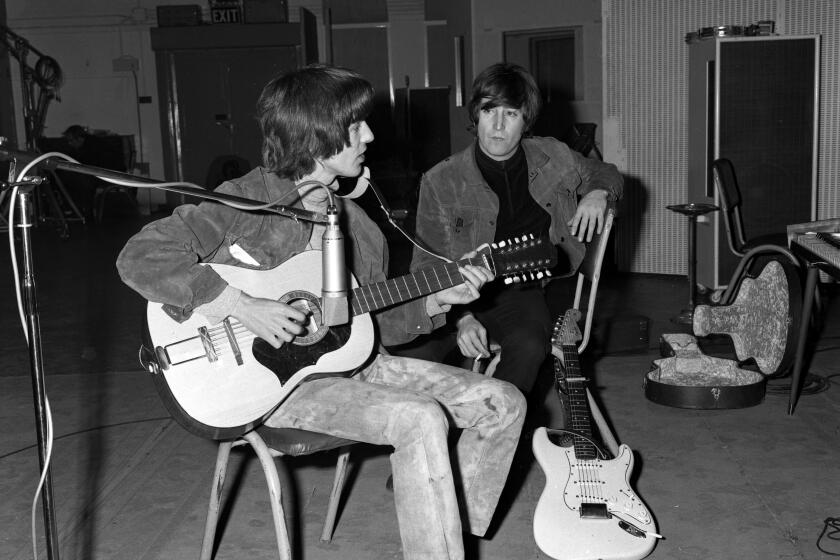Police are using new mouth-swab tests to nab drivers under the influence of marijuana and other drugs
San Diego police have a new way to confirm the presence of marijuana and other drugs in impaired drivers — a mouth-swab device that is already being used by police departments in more than a dozen states and is expected to become more popular with the legalization of marijuana.
The two Dräger DrugTest 5000 machines, which cost about $6,000 each, were donated by the San Diego Police Foundation last week.
They are expected to debut Friday night at the St. Patrick’s Day DUI checkpoint in downtown San Diego.
The machine, about the size of a mini bookshelf stereo system, tests for the presence of seven drugs — marijuana, cocaine, opiates, methamphetamine, amphetamine, methadone and benzodiazepines. The device does not read the level of intoxication; drivers would have to take a blood test for that information.
“It’s a huge concern of ours with the legalization of marijuana that we’re going to see an increase in impaired drugged driving,” Police Chief Shelley Zimmerman said at a news conference Thursday near the Ingraham Street Bridge in Mission Bay, a common DUI checkpoint spot.
California voters approved the use and cultivation of recreational marijuana by passing Proposition 64 in November.
To prepare for the effects of the law, a team of San Diego narcotics officers went to Denver to learn how Colorado has fared since recreational marijuana was legalized there and found that the region has seen an uptick in drugged driving, Zimmerman said. The numbers have been growing in California as well.
In 2014, 38% of drivers who were killed in motor vehicle crashes in California tested positive for drugs, whether legal or illegal, according to the state Office of Highway Safety. That’s up from 32% the year before.
“We want to get these impaired drivers off the streets,” the chief said.
The Dräger 5000 premiered in the U.S. in 2009 and is used by police in places such as Los Angeles, New York, Arizona and Nevada, as well as in other countries such as Australia, Belgium and Germany.
In San Diego, the machines will be used primarily at DUI checkpoints for now.
Like the handheld preliminary alcohol screening devices frequently used in the field to test for booze, drivers cannot be forced to submit to a Dräger 5000 test.
Officers trained to recognize the symptoms of drug impairment will first look for various indicators that a driver is high, such as an unsafe driving maneuver, bloodshot eyes, the odor of marijuana and blank stares, San Diego police Officer Emilio Ramirez said. Once there is ample suspicion of drug use, the officer can then request to perform field sobriety tests or for a driver to take the Dräger 5000 test.
If the driver refuses at that point, the officer can force the person to submit to a blood test.
To use the machine, the driver is handed a mouth swab and instructed to run it around the inside of the mouth for up to four minutes. The swab is then placed into the machine, along with a vial of testing solution, and the machine does its work. It takes about six to eight minutes for results to print out.
A positive result will likely send the driver to a police phlebotomist for a blood test to determine precise drug levels.
If the mouth swab test is negative but the officer still has a suspicion of impairment, then a blood draw might still be mandated, because the Dräger 5000 measures for only seven kinds of narcotics, Ramirez said.
When it comes to detecting marijuana, the machine only looks for the active THC compound that is responsible for the high. That component, delta-9 THC, can stay in a person’s system for a few hours or longer, depending on how the cannabis was ingested and how the person’s body processes the drug. The machine does not look for the inactive THC compounds, which can stay in a person’s system for weeks, police said.
In other words, if someone legally smoked marijuana two days ago, there would be nothing to worry about if tested on the machine.
Evidence from the Dräger 5000 will be admissible in court, although the machine is not expected to have a notable effect on how drugged driving cases are prosecuted, attorneys said.
Under California law, there is no legal threshold for the amount of drugs in a person’s system when it comes to driving. Alcohol cases are more black and white — a .08% blood-alcohol level or higher is illegal.
Officers and prosecutors have instead had to rely on subjective measures and observations to build a case of drug impairment, which can be different from person to person.
Davis writes for the San Diego Union Tribune.
ALSO
Tiny Oregon town puts hope in pot shops to revive its flailing economy
What is the future of recreational marijuana in Trump’s America?
More to Read
Start your day right
Sign up for Essential California for news, features and recommendations from the L.A. Times and beyond in your inbox six days a week.
You may occasionally receive promotional content from the Los Angeles Times.






